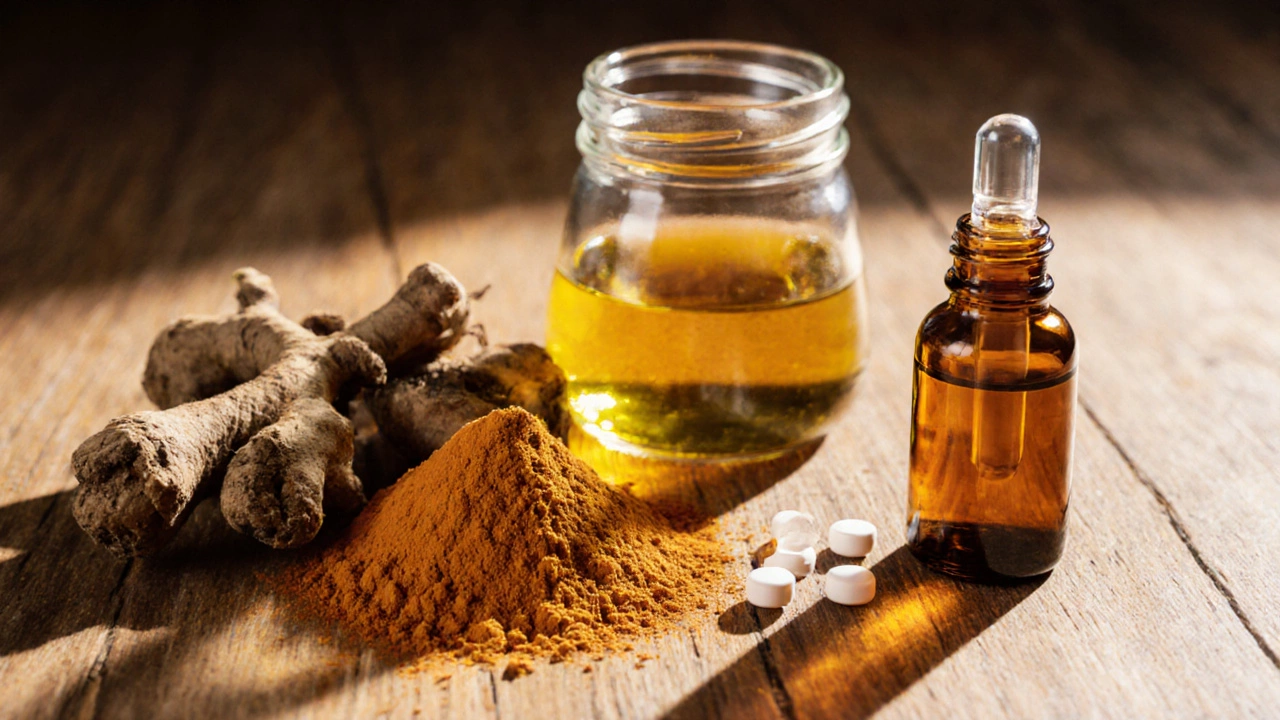People often wonder whether mixing two ancient healing paths-Ayurvedic medicine and homeopathic remedies-creates a synergistic boost or a risky cocktail. The short answer is: it depends on the specific products, your health condition, and how you manage them. This guide walks you through the basics, highlights potential pitfalls, and gives practical steps to decide if the combination works for you.
Key Takeaways
- Ayurveda and homeopathy use very different preparation methods, so direct chemical interactions are rare but not impossible.
- Always check the ingredients of each remedy; some Ayurvedic herbs can affect drug metabolism.
- Consult a qualified practitioner who understands both systems before starting a combined regimen.
- Monitor your body’s response closely, especially during the first two weeks.
- Pregnant women, children, and people on chronic allopathic drugs should exercise extra caution.
What Is Ayurvedic Medicine?
Ayurvedic medicine is a traditional Indian system of health that uses herbal formulations, minerals, and lifestyle practices to balance the body’s three doshas-Vata, Pitta, and Kapha. It dates back over 5,000 years and relies on whole‑plant extracts, metal‑based bhasmas, and dietary advice. Common preparations include tablets, powders, oils, and decoctions. Because many formulas contain multiple herbs, their pharmacological profile can be complex.
What Is Homeopathic Medicine?
Homeopathic medicine is a system of treatment that uses highly diluted substances, called potencies, to trigger the body’s self‑healing response. Originating in 18th‑century Germany, it follows the principle of "like cures like" and the law of infinitesimals. Remedies are prepared through serial dilution and succussion, resulting in solutions that often contain less than one molecule of the original substance.
Fundamental Differences Between the Two Systems
Understanding how Ayurveda and homeopathy differ helps you gauge interaction risk.
- Preparation: Ayurvedic products contain measurable amounts of active phytochemicals, while homeopathic potencies are ultra‑diluted.
- Dosage philosophy: Ayurveda typically prescribes a specific dose based on body type; homeopathy uses a single drop or pellet, focusing on the potency level (e.g., 30C).
- Regulation: In India, both fall under the AYUSH ministry, but quality standards differ. Ayurvedic drugs must list exact herbal ingredients; homeopathic products often list only the mother tincture.

Potential Interaction Scenarios
While the two systems operate on separate scientific premises, interactions can arise in three main ways:
- Pharmacokinetic overlap: Some Ayurvedic herbs (e.g., turmeric, guggul) can induce or inhibit liver enzymes (CYP450). If you’re also taking a homeopathic remedy derived from a drug‑like substance (e.g., Arnica), the enzyme effect could alter the potency’s activity, albeit marginally.
- Additive physiological effects: Both systems may aim to lower inflammation or boost immunity. Combining an anti‑inflammatory herb with a potentized anti‑inflammatory homeopathic remedy could amplify the effect, potentially leading to excessive bleeding risk in sensitive individuals.
- Contamination or adulteration: Poor‑quality Ayurvedic products sometimes contain heavy metals or synthetic drugs. If such a product is taken alongside a homeopathic medication, unexpected side effects may emerge.
Guidelines for Safe Co‑Administration
Follow these practical steps to minimize risks:
- List every ingredient: Write down the exact herbs, minerals, and potencies you plan to use. Look for overlapping actions such as blood‑thinning, diuretic, or sedative effects.
- Check with a qualified practitioner: Seek advice from an Ayurvedic physician who is also familiar with homeopathy, or vice‑versa. They can adjust dosages or suggest timing (e.g., Ayurvedic herbs in the morning, homeopathic drops at night).
- Start low, go slow: Introduce one new remedy at a time. Observe your body for two weeks before adding another.
- Mind your allopathic meds: If you’re already on prescription drugs, treat Ayurvedic and homeopathic products as supplements. Discuss with your primary doctor to avoid dangerous interactions.
- Use reputable brands: Choose manufacturers that follow Good Manufacturing Practices (GMP) and provide batch testing for contaminants.
When to Avoid Combining Them
Some situations call for a clear separation:
- Pregnancy: Certain Ayurvedic herbs (e.g., black cohosh) and homeopathic potencies (e.g., Belladonna) can stimulate uterine activity.
- Chronic kidney or liver disease: Herbs that are metabolized by the liver may burden an already compromised organ.
- Auto‑immune disorders on immunosuppressants: Over‑stimulating the immune system could counteract prescribed therapy.
- Children under 12: Both systems have pediatric dosing guidelines, but mixing without professional oversight is risky.
Common Myths Debunked
Myth 1: "Because homeopathic medicines are just water, they can’t interact with anything."
Reality: While the dilution is extreme, the carrier substance (often alcohol or lactose) and the timing of administration can affect absorption of other compounds.
Myth 2: "All herbs are natural, so they’re automatically safe with any other remedy."
Reality: Natural doesn’t equal harmless. For example, Ayurvedic *kshara* (alkaline) preparations can raise stomach pH, influencing how a homeopathic remedy dissolves.

Practical Checklist Before You Mix
- Document every product (brand, batch, expiry).
- Identify key actions (e.g., anti‑inflammatory, sedative).
- Confirm no heavy‑metal or synthetic drug adulteration (Herbal supplement testing reports are useful).
- Schedule a consultation with a dual‑trained practitioner.
- Start with a low dose and keep a symptom diary for at least 14 days.
- Report any adverse effects to your healthcare provider immediately.
Recent Research Snapshot (2023‑2024)
A joint study by the Institute of Ayurvedic and Homeopathic Research examined 120 volunteers taking Ashwagandha root extract alongside Arnica 30C. Results showed no statistically significant change in liver enzymes, but participants reported a mild increase in energy levels. The authors concluded that short‑term combined use appears safe for healthy adults, but warned against extrapolating to patients with chronic illnesses.
Next Steps for Different Scenarios
If you’re healthy and curious: Follow the checklist, choose high‑quality products, and monitor yourself.
If you have a chronic condition: Prioritize your allopathic regimen, involve both your physician and a certified Ayurvedic/homeopathic expert.
If you’re pregnant or nursing: Avoid blending them unless a specialist explicitly approves.
Frequently Asked Questions
Can I take Ayurvedic herbs and homeopathic drops at the same time of day?
It’s safer to separate them by at least 2-3hours. This reduces the chance that the herbal constituents affect the dissolution of the homeopathic potency.
Do homeopathic medicines have any calories or nutrients?
No. After serial dilution, the solution contains virtually no measurable substances, so it contributes no calories, vitamins, or minerals.
Are there any Ayurvedic herbs that should never be mixed with homeopathic remedies?
Herbs with strong anticoagulant properties, like *guggul* or *garlic* extracts, can amplify the blood‑thinning effect of homeopathic *Arnica* or *Calendula*. Consult a practitioner before pairing them.
What should I do if I experience an unexpected reaction?
Stop both remedies immediately, document the symptoms, and seek medical attention. Bring the product labels so the clinician can identify possible culprits.
Is there scientific evidence supporting the combined use?
Limited studies exist, mainly pilot trials. They suggest safety in short‑term use for healthy adults, but robust clinical data are still lacking.





